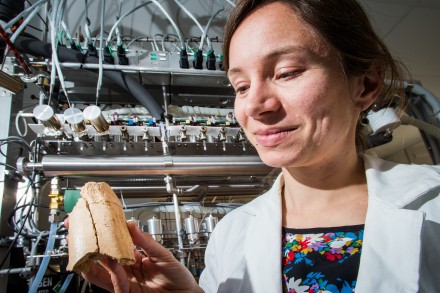Neanderthals and Modern Humans coexisted

Neanderthal groups lived alongside modern humans for several thousand years, an international team of scientists has found, overturning previous theories about the extinction of Neanderthals.
The team applied a new radiocarbon dating method which revealed that Neanderthals across Europe did not all die out at one time as modern humans appeared.
“The two groups lived in neighboring regions for several thousand years,” said Dr Rachel Wood from the Research School of Earth Sciences at The Australian National University.
“They would have had plenty of time to interact.”
Recent genetic studies have shown that non-African humans interbred with Neanderthals, but there was little evidence to show where or how often this occurred.
However this latest study suggests Neanderthals and modern humans overlapped in Europe around 40,000 years ago, for between 2,600 and 5,400 years.
Dr Wood was part of the international research team, led by Professor Thomas Higham from the University of Oxford, which published its findings in the latest edition of Nature http://dx.doi.org/10.1038/nature13621.
The team analysed around 200 samples of bone, charcoal and shell from 40 key archeological sites across Europe. They used ultra-fine filters to isolate intact collagen protein molecules from bones, which ensured that their samples were not contaminated with more recent organic material, which can seriously skew results.
The new information clearly dates stone tools and artefacts attributed to Neanderthals, known as the Mousterian industry in regions of France, Germany and northern Spain, as younger than the Italian Uluzzian industry, which contains teeth from modern humans.
“We can’t tell yet whether this overlap led to humans and Neanderthals interacting,” Dr Wood said. “It does seem as though there was a complex cultural and biological mosaic which may have allowed the two species to meet in Europe.”
Professor Higham agreed. “The chronology suggests Neanderthals may have survived in dwindling pockets of Europe before they became extinct,” he said.
 Follow
Follow